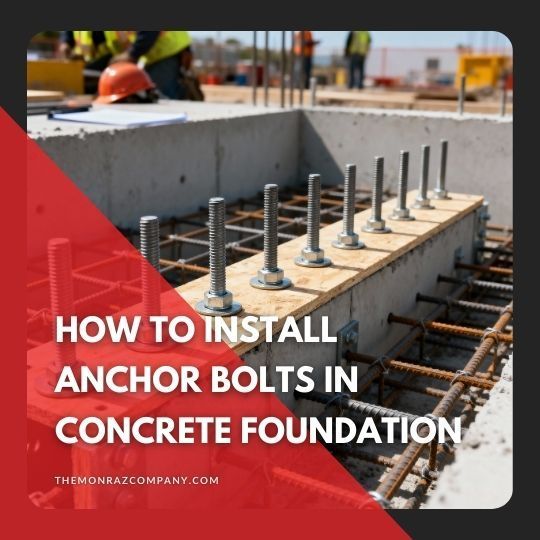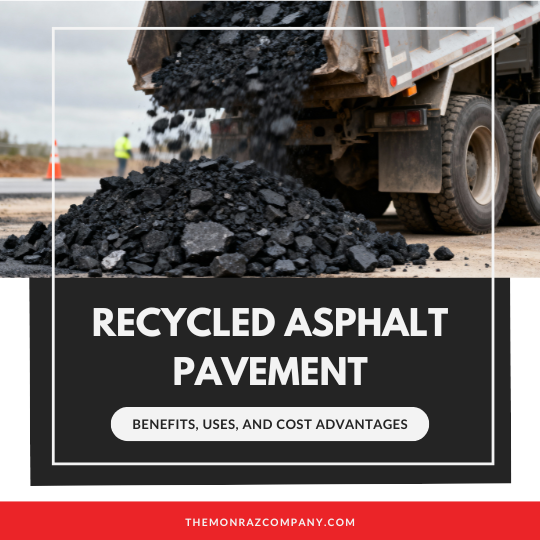Concrete Curb and Gutter: Everything You Need to Know
As we go about our daily lives, navigating through the streets and parking lots of our communities, it’s easy to overlook the essential structures like concrete curbs and gutters that line our paths. These often-overlooked features play a crucial role in the functionality and aesthetics of our built environment, managing water runoff, reinforcing pavement, and guiding the flow of traffic.
In this comprehensive guide, w e’ll dive deep into the different types of concrete curbs and gutters , their unique applications, and the step-by-step process of proper installation. Whether you’re a commercial property owner, a contractor, or a city planner, understanding the intricacies of these essential concrete structures will empower you to make informed decisions that will benefit your project for years to come.
If you’d like a quicker or more specific answer to your concrete repairs question, call the experts at TMC Engineering ! If you’re in Southern California, we can help educate you on your problem and perform whatever repair is necessary. We’ve got an expert solution for your concrete or asphalt concern!
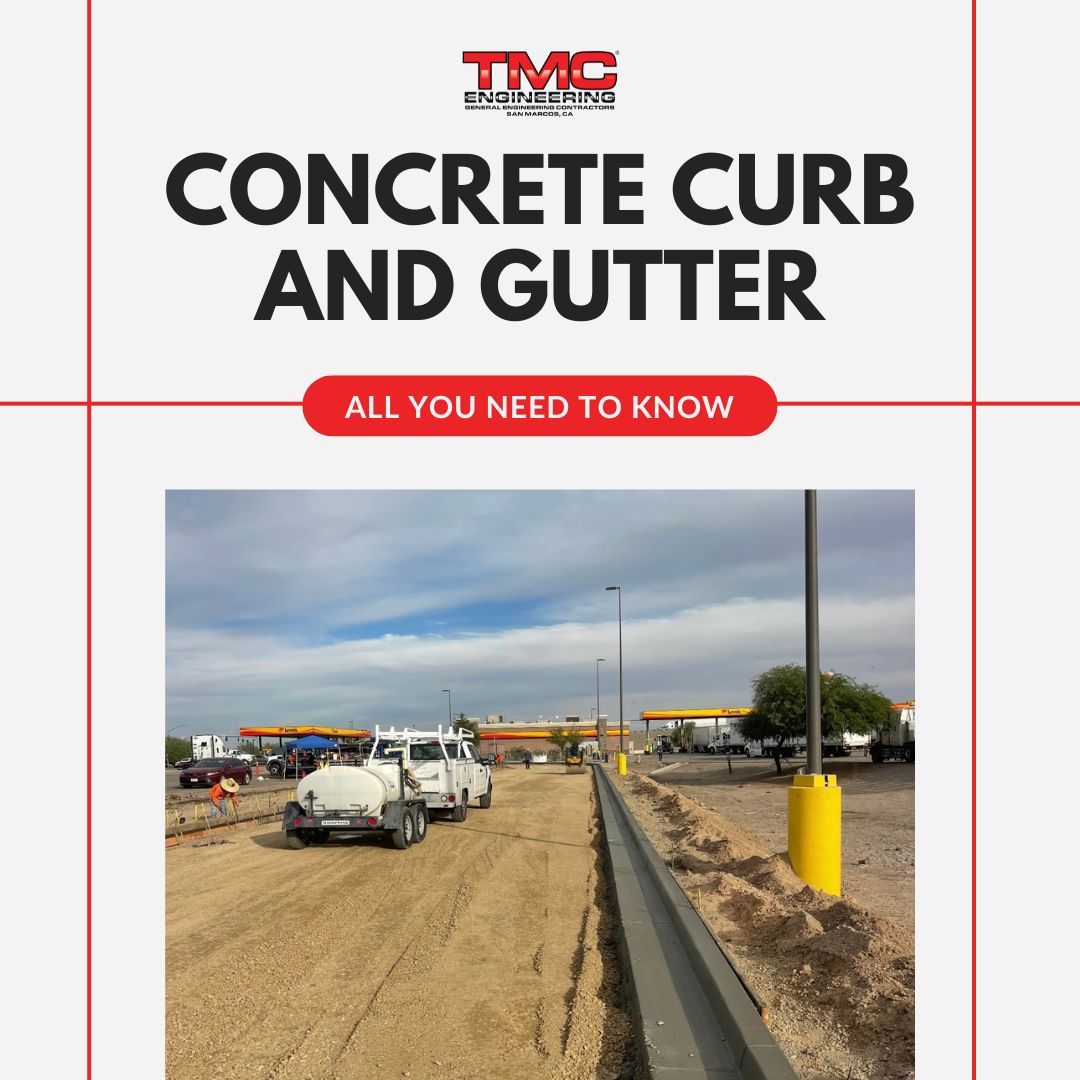
Concrete Curb and Gutter
As we mentioned, concrete curbs and gutters play a vital role in the management of water runoff, the protection of pavement, and the overall aesthetic appeal of a commercial property or public space. These two complementary concrete structures work hand-in-hand to channel water and debris away from the pavement, prevent flooding and erosion, and create a clean, organized look that enhances the curb appeal of any development.
While they may seem like simple elements of a larger project, the design and installation of concrete curbs and gutters require a certain level of expertise. Failure to properly plan, prepare, and execute the construction of these structures can lead to a variety of issues, from premature deterioration to ineffective water management.
In the following sections, we’ll delve into the different types of concrete curbs and gutters, their unique features and applications, and the step-by-step process of installing them correctly. By the end of this post, you’ll have a comprehensive understanding of these essential concrete structures and how they can benefit your property or project.
What Is Curb and Gutter?
A curb is a raised, concrete edge that separates a roadway or parking lot from the surrounding landscape, such as a sidewalk or green space. Gutters, on the other hand, are the slanted concrete slabs that run alongside the curb, directing water runoff away from the pavement and into a drainage system.
While these two concrete elements may seem like simple, straightforward features, their combined function and installation process are anything but simple. Properly designed and installed curbs and gutters play a vital role in the overall functionality and longevity of a commercial property or public infrastructure project.
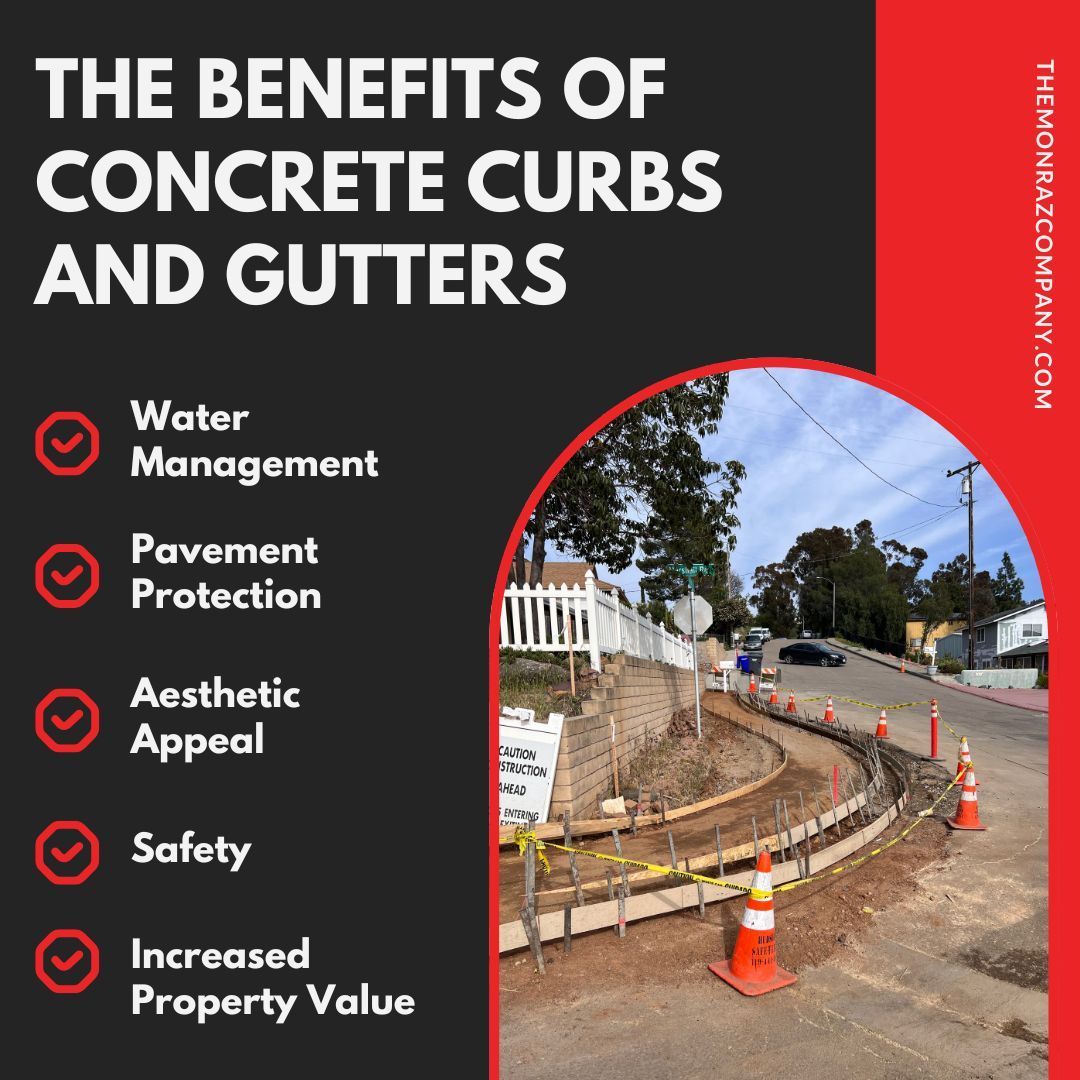
The Benefits of Concrete Curbs and Gutters
- Water Management: One of the primary benefits of concrete curbs and gutters is their ability to effectively channel water and debris off-site. By directing the flow of runoff, these structures help prevent pooling on the pavement, which can lead to flooding, erosion, and damage to the asphalt or concrete over time.
- Pavement Protection: Curbs support pavement edges, preserving the concrete or asphalt’s integrity and preventing cracking or chipping. This extends pavement lifespan and minimizes costly repairs or replacements.
- Aesthetic Appeal: Well-installed concrete curbs and gutters enhance a property’s appearance, creating a clean, organized, and professional perimeter that boosts curb appeal and visual harmony.
- Safety: Curbs act as a physical barrier, separating pedestrian and vehicular traffic and guiding the flow of vehicles to reduce the risk of accidents. This is especially important in high-traffic areas or where there is a need to delineate the boundary between different modes of transportation.
- Increased Property Value: By improving the functionality, durability, and aesthetic appeal of a property, well-designed and installed concrete curbs and gutters can actually increase the overall value of the real estate. This makes them a smart investment for commercial property owners and developers.
To fully capitalize on these benefits, it’s essential to work with experienced professionals who understand the intricacies of concrete curb and gutter design and installation. By partnering with a knowledgeable team, you can ensure that these critical structures are built to the highest standards, meeting all relevant building codes and regulations while also addressing the unique needs and challenges of your specific project.
You can also check our guide to tools for concrete . This comprehensive resource covers the various tools and equipment used in concrete construction, including those that may be employed in the installation of curbs and gutters.
What Are The Different Types Of Curb and Gutter?
When it comes to concrete curbs and gutters, there are several different types to choose from, each with their own unique features and applications. Understanding the differences between these options can help you select the best solution for your specific project requirements.
Barrier Curbs
Barrier curbs, also known as vertical or straight curbs , are the most common type used in commercial and municipal projects. These curbs feature a vertical face that creates a solid concrete barrier, preventing vehicles from leaving the roadway. Barrier curbs are often paired with a concrete gutter to direct water runoff away from the pavement.
Barrier curbs are highly durable and are the ideal choice for areas where you need to clearly delineate the boundary between a road or parking lot and the surrounding landscape, such as sidewalks or green spaces.
Surmountable Curbs
Also referred to as rolled or sloped curbs , surmountable curbs have a more gradual slope, making them easier for vehicles to drive over. This makes them a popular choice for areas with frequent driveway entrances or intersections where vehicles need to transition on and off the pavement.
Although surmountable curbs are less effective as physical barriers, they still guide traffic flow and are ideal for areas requiring accessible transitions, such as near ADA-compliant ramps or loading zones.
Monolithic Curbs
Monolithic curbs, also known as integral or flush curbs , are constructed as a single unit with a roadway or parking lot. These curbs are flush with the surrounding pavement, allowing vehicles to easily drive over them. In areas with heavy loading and unloading activity, monolithic curbs provide a smooth transition for forklifts, delivery trucks, and other equipment.
While monolithic curbs offer convenience and accessibility, they do not provide the same level of protection as barrier or surmountable curbs, as they do not create a defined edge or barrier. As a result, they are less effective at preventing water runoff and soil erosion.
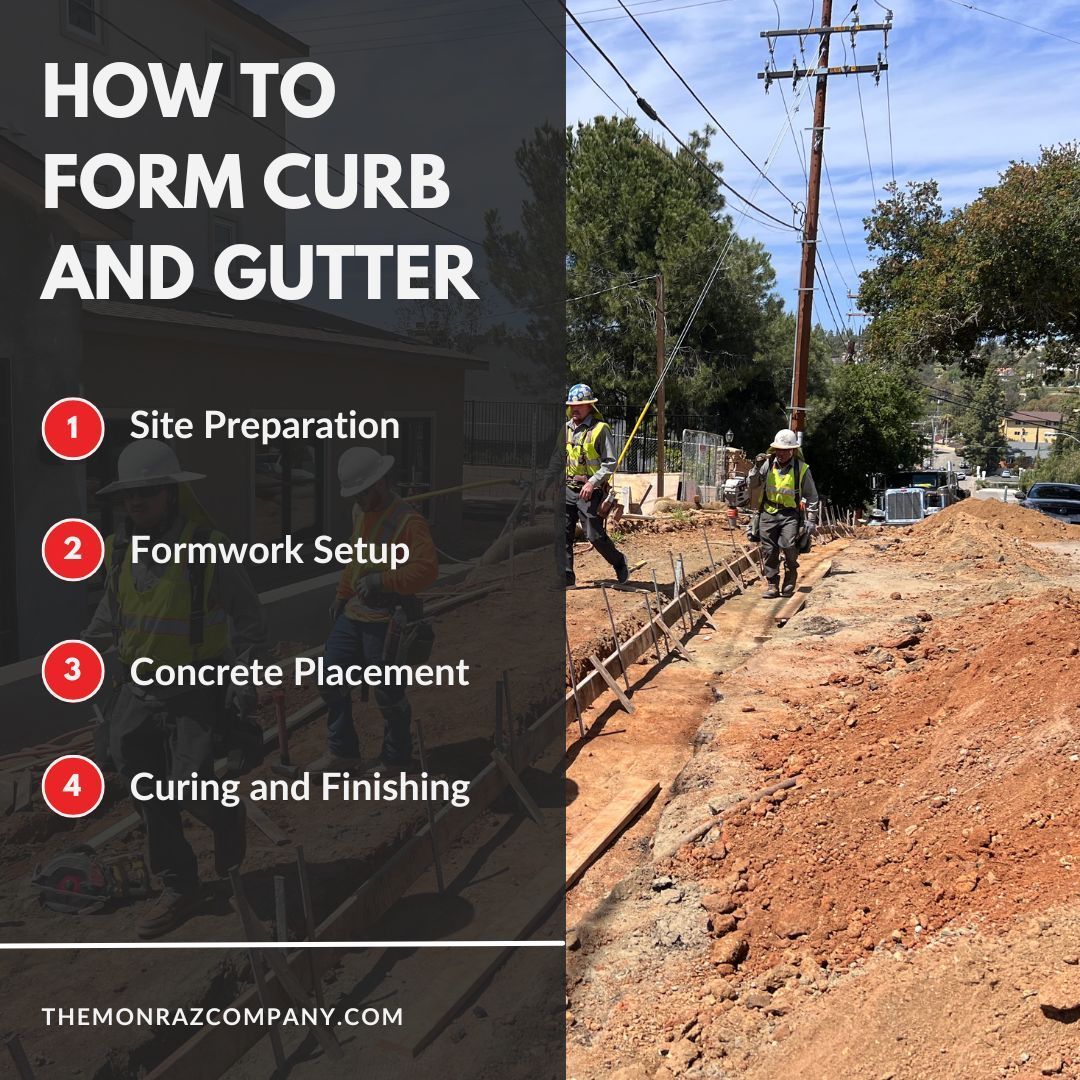
How To Form Curb and Gutter
The process of forming and installing concrete curbs and gutters requires careful planning, preparation, and execution. Here’s a step-by-step overview of the key steps involved:
Step 1: Site Preparation
Before you can begin the installation process, it’s essential to properly prepare the site. This includes clearing the area of any debris or obstructions, grading the surface to the desired slope and elevation, and compacting the subgrade soil to ensure a stable foundation.
Properly preparing the site is crucial, as the subgrade serves as the foundation for building the curbs and gutters. Failure to properly prepare the site can lead to issues such as uneven surfaces, cracking, or even the complete failure of the concrete structures.
Step 2: Formwork Setup
After preparing the site, the next step is setting up the formwork to shape the curbs and gutters. This process typically involves constructing wooden or metal forms to contain the concrete during pouring.
The forms must be sturdy, level, and properly secured to ensure the resulting curbs and gutters are straight, uniform, and free of any irregularities. Reinforcing steel may also be added to the formwork to provide additional structural support.
Step 3: Concrete Placement
With the formwork in place, the next step is to pour the concrete into the molds. This process demands careful attention to mix, pour, and consolidate the concrete, actively eliminating air pockets or voids.
Depending on the project requirements, workers place the concrete in multiple lifts or layers, vibrating and finishing each layer before adding the next.
Step 4: Curing and Finishing
After the concrete has been poured, it’s essential to allow it to cure properly. This typically involves covering the freshly poured concrete with a curing compound or keeping it moist for several days to ensure it achieves the necessary strength and durability.
After the concrete cures, workers trim the edges, apply a textured surface, and paint the curbs to enhance visibility or aesthetic appeal.
Following all relevant building codes and regulations throughout the process is crucial to ensure proper installation of curbs and gutters that meet safety and performance standards. By partnering with an experienced concrete contractor like TMC Engineering , you can ensure your concrete curb and gutter installation project is completed to the highest standards, providing long-lasting performance and maintaining the overall integrity of your commercial property or public infrastructure.
Concrete curbs and gutters play a vital role in managing water runoff and protecting the pavements of commercial properties and public spaces.
Concrete curbs and g utters may often go unnoticed, but they play a vital role in maintaining the integrity of roadways . By understanding the different types of curb and gutter systems and the proper installation process, you can make informed decisions that will benefit your project both in the short and long term.
Whether you’re planning a new commercial development, maintaining an existing property, or working on a public infrastructure project, the team at TMC Engineering , is here to guide you through the process of selecting and installing the perfect concrete curbs and gutters for your needs.
At TMC Engineering, we have a deep commitment to delivering projects characterized by the highest standards for safety , workmanship, and client satisfaction. We aim to provide you with valuable content and insights related to the services our team of experts provides! Whether you require asphalt paving, striping, sealing, or concrete work, we offer a full suite of transportation construction solutions. Look no further we’ve got all you need and more!

